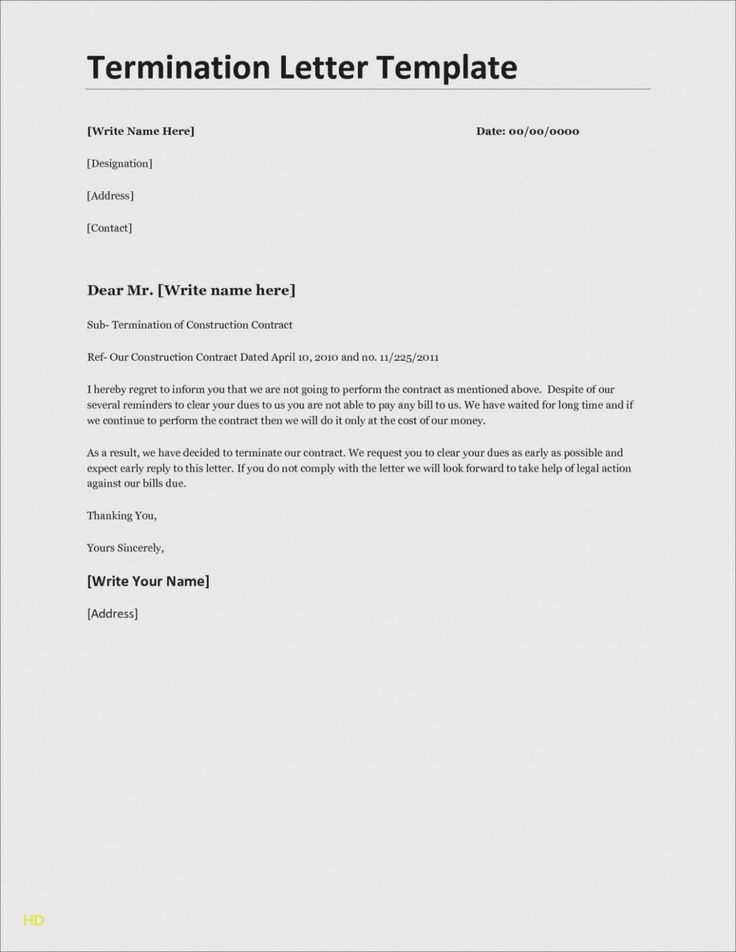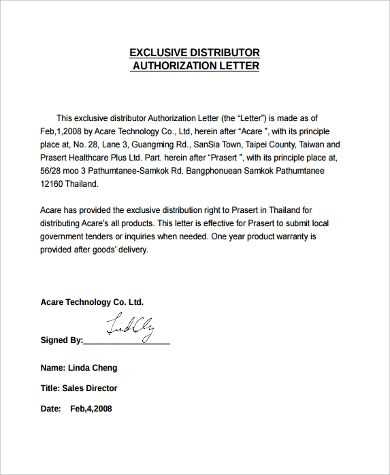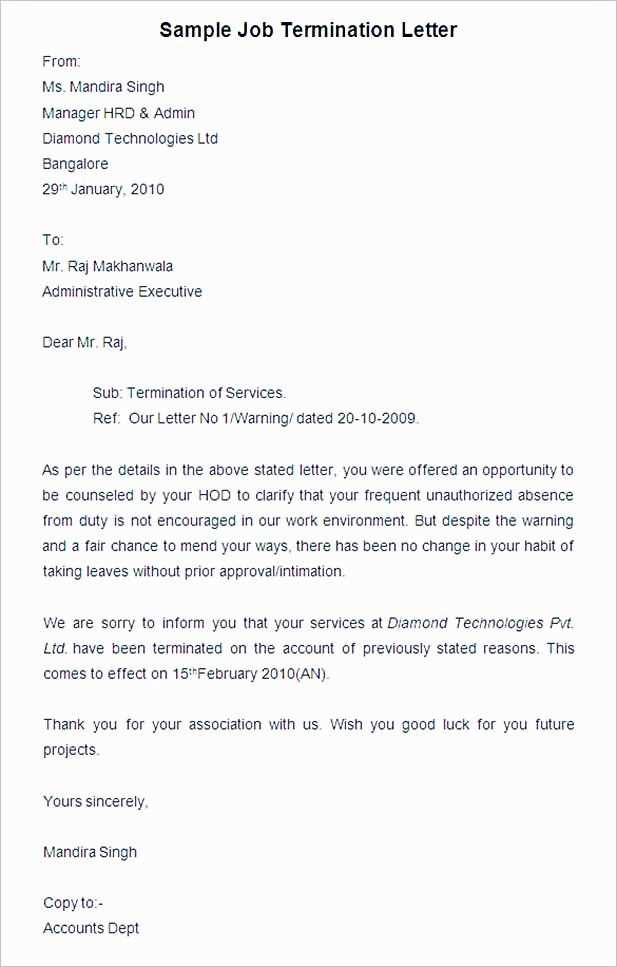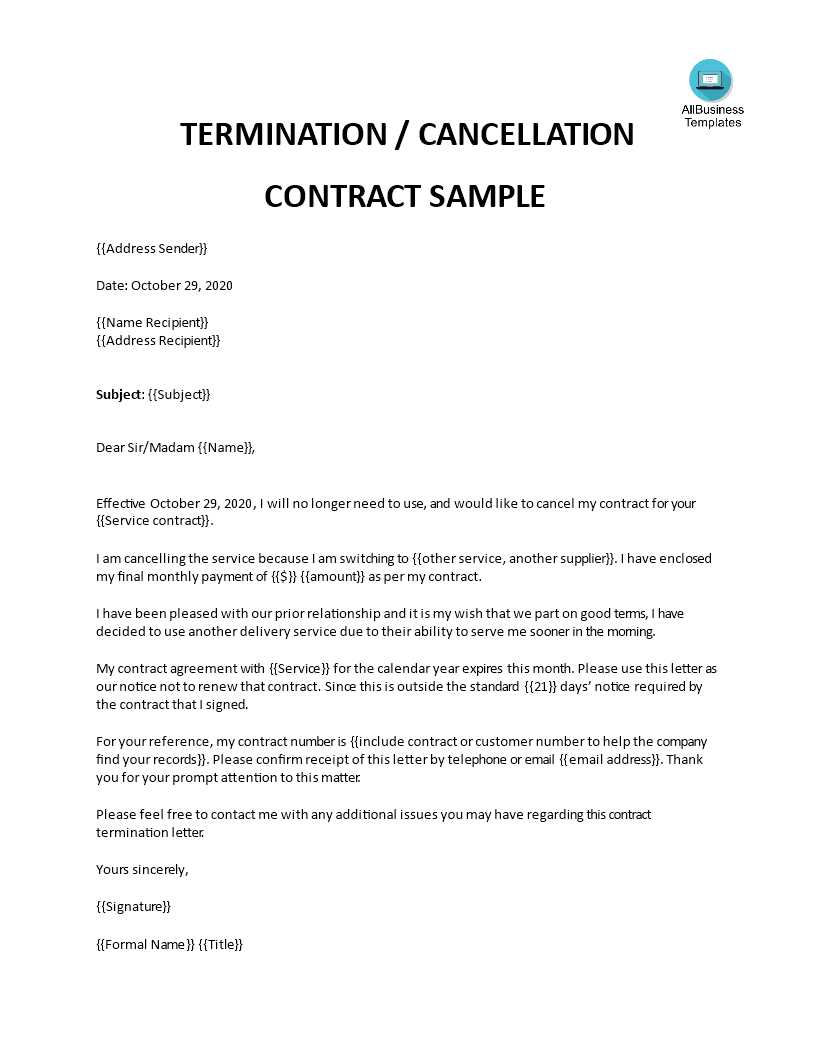Distributor Termination Letter Templates for Professional Use

When it comes to concluding a business partnership, it’s essential to communicate the decision clearly and professionally. A well-crafted document can help ensure that both parties understand the terms of the separation and prevent potential misunderstandings. Whether ending a supply agreement or ceasing collaboration, the right approach can safeguard both interests and minimize conflicts.
Formal communication is crucial for any transition, as it serves as a legal record and reinforces the decision. Crafting such a message requires attention to detail, ensuring that all important information is included. It should outline the reasons for ending the relationship, any remaining obligations, and the effective date of the change.
Clear and concise writing is key to a smooth process, avoiding ambiguity and providing both parties with a straightforward understanding of the situation. This type of communication can help maintain a professional reputation and leave the door open for future opportunities, if necessary.
Ending a commercial relationship requires careful documentation to ensure a smooth transition for both parties. A formal exit notification serves as the foundation for a professional and clear separation. Without this important step, misunderstandings or disputes may arise, causing potential harm to both businesses involved. It ensures that all parties are on the same page regarding expectations and the final terms of the agreement.
Clarity and Professionalism

A well-drafted exit notice provides clarity, setting the tone for the dissolution of the partnership. It prevents unnecessary confusion by specifying the terms and conditions of the end of the agreement, such as the final date of engagement and any remaining duties. With a formal document in place, businesses are better positioned to handle the separation efficiently, without damaging their reputations or operations.
Legal Protection and Compliance

Beyond clear communication, this type of notice also serves as a legal safeguard. It can protect both parties from potential legal claims and ensure compliance with the terms initially agreed upon. If disputes arise later, a formal record of the decision helps clarify the process and agreements made, making it an essential tool for mitigating risks in any business contract termination.
Key Elements in a Separation Document
When ending a professional collaboration, it is essential to include specific details in the communication to ensure both parties are clear on the terms of the conclusion. A comprehensive document will cover the most important aspects of the separation, offering both transparency and structure. The following table outlines the key components that should be included in such a document:
| Element | Description |
|---|---|
| Effective Date | The exact date the business relationship will officially end. |
| Reason for Ending | A brief explanation of why the partnership is concluding. |
| Outstanding Obligations | Any remaining responsibilities or duties that need to be fulfilled before the separation is complete. |
| Financial Settlement | Details regarding any final payments, refunds, or outstanding financial arrangements. |
| Return of Property | Instructions for the return of any company property or confidential materials. |
| Confidentiality Clauses | Any ongoing confidentiality or non-compete clauses that will remain in effect after the separation. |
By ensuring these key components are covered, both parties can move forward with clear expectations and a mutual understanding of their rights and responsibilities post-separation.
Creating an effective exit notification is crucial for ensuring a smooth and professional end to a business arrangement. The document should be direct, outlining all necessary details without ambiguity. Clear communication in such notices helps prevent misunderstandings and provides both parties with a clear understanding of their final obligations and rights. Here’s how to draft an effective message that covers all essential points.
1. Begin with a Professional Tone
The opening should be formal and respectful, setting the right tone for the document. Begin by clearly stating the intention to end the business relationship, and make sure the language remains polite and courteous. Avoid using overly emotional or harsh words that could lead to unnecessary tension.
2. Be Specific and Direct
Clarity is key when communicating the reasons for the conclusion of the partnership. Specify the effective date of the end and any remaining steps that must be taken. Providing detailed information about any outstanding responsibilities, payments, or return of materials will ensure that both parties understand what is expected.
By keeping the notice clear, concise, and respectful, you ensure a smoother transition and reduce the chance of disputes. It is essential to keep the message straightforward while including all critical details for full transparency.
Common Mistakes to Avoid in Notices
When drafting a formal notification to end a business relationship, it’s easy to overlook certain details that could lead to confusion or disputes later on. While it’s important to be thorough, it’s equally crucial to avoid common errors that may undermine the clarity or professionalism of the communication. Below are some key mistakes to steer clear of when composing such documents.
1. Lack of Clear Dates
One of the most critical elements of any notice is the effective date. Failing to specify a clear and unambiguous date for the end of the relationship can cause confusion. Without a precise timeline, both parties may be uncertain about when their obligations officially end, leading to potential misunderstandings or complications.
2. Ambiguity in Terms
Avoid vague language that leaves room for interpretation. If any conditions, financial settlements, or actions are required from either party, they should be clearly outlined. Leaving out crucial details or using broad terms may result in conflicting expectations, which could harm the professional relationship even further.
By addressing these common mistakes, you can ensure that your communication is effective and avoids unnecessary complications during the separation process.
When ending a business arrangement, it’s essential to consider the legal implications of such a decision. Ensuring compliance with the agreed terms, as well as understanding the potential legal consequences, is crucial for avoiding future disputes. Both parties involved should be fully aware of their rights and obligations as per the contract before proceeding with the conclusion of their professional relationship.
1. Review Contractual Obligations
Before taking any action, carefully review the contract that governs the business relationship. Most agreements include specific clauses related to how and when either party can end the collaboration. These terms may include notice periods, reasons for cessation, and any penalties or responsibilities that must be fulfilled. Failure to adhere to these stipulations could lead to legal complications.
2. Protect Confidential Information

Confidentiality clauses are often an essential part of business contracts. Even after the partnership has ended, both parties may still be obligated to keep certain information private. Breaching these terms could result in legal action. It is crucial to ensure that any sensitive data or proprietary information is handled according to the agreements in place.
Understanding and following these legal considerations can protect both parties from unnecessary conflicts and ensure that the business separation is conducted smoothly and within the bounds of the law.
When to Issue a Notice of Ending the Agreement
Deciding when to formally end a business relationship is a crucial step in ensuring a smooth and professional transition. Issuing a notice at the right time is essential to avoid disruptions and to maintain good standing. There are several circumstances when such a notice should be issued, each of which requires careful consideration.
- Completion of Contractual Terms: If the contract has been fulfilled and no further obligations are required, it may be time to end the agreement.
- Failure to Meet Performance Standards: If the other party has consistently failed to meet agreed-upon performance standards, issuing a formal notice may be necessary to protect your business interests.
- Changes in Business Strategy: If strategic shifts or rebranding make the existing partnership unnecessary, it’s important to notify the other party to avoid confusion or potential conflicts.
- Mutual Agreement: In cases where both parties mutually agree to end the relationship, a formal notice is still necessary to ensure that all terms are properly documented and agreed upon.
In all of these situations, issuing the notice promptly and professionally will help manage the separation process effectively and ensure that both parties understand the terms of the conclusion.